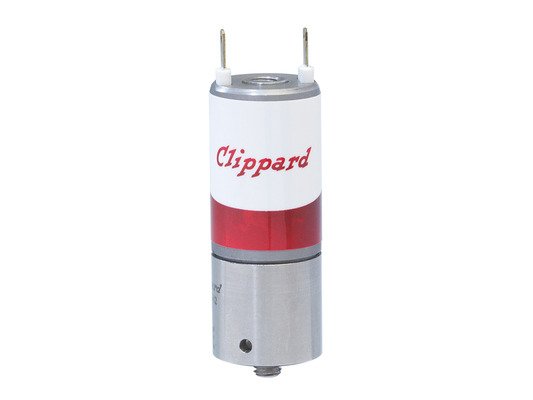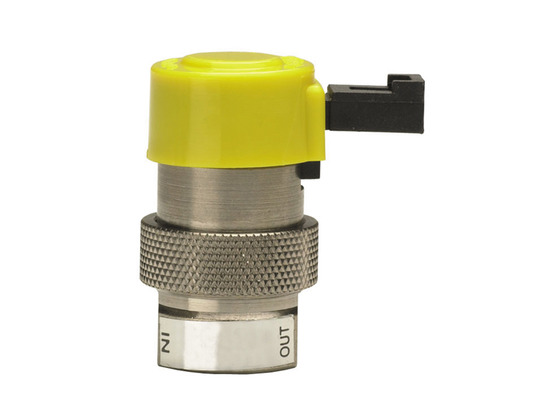Designing for Life: Overcoming Pneumatic Challenges in ECMO Systems
Extracorporeal Membrane Oxygenation (ECMO) represents one of the most critical and complex applications in medical engineering. Serving as a temporary substitute for the heart and lungs, an ECMO system removes blood from the patient, filters out carbon dioxide, oxygenates the blood externally, and returns it to the body. The pneumatic system that makes this possible must deliver precise, reliable control over every variable—gas concentration, flow rate, and system pressure—often within an extremely limited footprint.
Understanding the Pneumatic Demands of ECMO
The pneumatic control architecture in an ECMO unit is typically divided into three primary areas. First is the regulation of the sweep gas—a controlled blend of oxygen and air responsible for carbon dioxide removal. This process requires fine-tuned, closed-loop control to ensure metabolic stability. The second is the blending of oxygen concentration, or FiO2, which must be adjustable to meet each patient’s evolving respiratory needs. Lastly, engineers must control the pressure and flow through the membrane oxygenator, maintaining steady operation while avoiding damaging pressure spikes or transients.
Subscribe to Clippard's YouTube channel
Engineering Constraints: Size, Power, & Performance
From a design standpoint, the challenge begins with miniaturization. These systems are often mobile or transport-capable, meaning every component must meet strict spatial constraints without sacrificing performance. Engineers are routinely forced to balance flow capacity, pressure range, and thermal stability against size and weight targets. Compounding that is the need for redundant safety architecture and deterministic system behavior—valves must actuate precisely, repeatably, and with minimal hysteresis. This becomes especially critical in closed-loop circuits where real-time responsiveness and accuracy directly affect patient outcomes.
Power consumption is another limiting factor, especially for systems relying on battery backup. Valves with high current draw can generate unwanted heat, which risks interfering with nearby sensors or inducing thermal drift in pressure control. Quiet operation is equally important. Valves that emit audible clicks or mechanical vibration can cause issues for sensitive sensor arrays and may contribute to patient discomfort, particularly in neonatal or intensive care environments.
Material Compatibility & Cleanliness Standards
Engineers must also consider cleanliness and regulatory compliance. Components must meet ISO Class 8 or better for use in oxygen-enriched environments. This often involves sourcing valves that are oxygen-cleaned, feature inert internal materials like PTFE or stainless steel, and are free from elastomers that may off-gas under pressure.
Choosing the right valve for ECMO isn't simply a matter of selecting a high-flow or fast-acting model. The ideal solution must feature minimal internal volume to prevent gas mixing, deliver response times on the order of 10 milliseconds or less, operate at low wattage to preserve system power, and provide reliable sealing to ensure zero or near-zero leak rates. Valves must also be capable of high cycle counts with minimal performance degradation, maintaining tight tolerances over time in the face of continuous actuation.
While multiple valve technologies exist, Clippard’s spider-based designs have proven particularly effective in critical care applications due to their compact footprint, rapid response characteristics, and proven longevity. In ECMO systems, spider valves are often employed in both proportional O2 blending circuits and fast-acting isolation points for sweep gas control. Their consistent performance under tight power and space constraints makes them a natural fit for life-support designs.
Integration Over Selection
Ultimately, the key to success in ECMO development isn’t just about selecting the right valve—it’s about engineering the right solution. Many OEMs work directly with pneumatic specialists to develop custom valve-and-manifold assemblies that reduce part count, simplify assembly, and improve system reliability. These integrated solutions streamline the development process and free engineers to focus on clinical performance rather than component-level plumbing.
Clippard’s experience in life science pneumatics, especially in high-precision oxygen control, makes us a trusted partner for ECMO and other life-support platforms. Whether you're in early-stage development or working to optimize a production system, we understand what it takes to build devices that must perform flawlessly, every time. Ready to get started? Contact us today to discuss your specific application.
|
Related Products |
||||
ES Series |
DV Series |
EV Series |
||
Related Content
- Clippard's Spider Technology
- Precision & Reliability in Critical Medical Applications
- When Cleanliness Matters, You Can Count on Clippard





